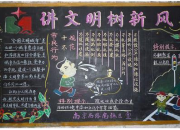人教版必修2重点词汇短语句型语法
时间:2021-08-31今天,要和大家分享人教版必修2的重点词汇、短语、句型和语法啦,强烈建议大家收藏学习哦!

Unit1 Cultural Relics
【重点词汇、短语】
1. survive 幸免,生存,生还
2. in search of 寻找
3. select 挑选
4. design 设计,图案,构思
5. fancy 奇特的,异样的,想象
6. decorate 装饰,装潢
7. belong to 属于
8. in return 作为回报
9. at war 处于交战中
10. remove 移动,搬动
11. less than 少于
12. doubt 怀疑
13. worth 值得的,相当于…的价值
14. take apart 拆开
15. explode 爆炸
16. sink 下沉,沉下
17. think highly of 高度评价
【重点句型】
1. There is no doubt that… 毫无疑问…
2. when的用法
was/were doing…when… 正在做某事…这时
was/were about to do… when…. 将要做某事…这时
had just done…when… 刚做完某事…这时
3. China is larger than any other country in the world. (同一范围内的比较)
She runs faster than any man in Greece. (不同范围内的比较)
4. the way的用法
The way___ he explained to us was quite simple. (that/which/省略)
The way ___ he explained the sentence to us was not difficult. (that/in which/省略)
5. worth的用法
be (well) worth doing sth (很)值得做某事
be worthy to be done = be worthy of being done
It’s worthwhile to do sth = it’s worthwhile doing sth
6. “疑问词+ to do” 结构,在句中做主语、宾语、表语
How to do it is a question.
I don’t know what to do next.
7. it做形式主语
It has been proved that pride goes before a fall.
事实证明骄必败。
8. what 引导主语从句,在从句中作主语
What he has said is of great importance.
What happened to him remained unknown.
【语法总结】
非限定性定语从句
非限定性定语从句的作用是对所修饰的成分作进一步说明(注:通常和主句间用逗号隔开,不受主句句子结构的影响,将从句拿掉后其他部分仍可成立)
限制性定语从句与非限制性定语从句的六点区别
区别一:形式不同
限定性定语从句主句和从句之间不用逗号隔开,口语中使用时也不停顿;而非限定性定语从句与主句之间通常有逗号隔开,口语中使用时有停顿。
区别二:功能不同
限定性定语从句用于对先行词的意义进行修饰、限制和识别,如果去掉,就会造成句意不完整或概念不清;而非限定性定语从句用于对先行词起补充说明作用,如果省略,句意仍然清楚、完整。如:
People who take physical exercise live longer. 进行体育锻炼的人活得长些。(若把从句去掉句子就失去意义)
His daughter, who is in Boston now, is coming home next week. 他女儿现在在波士顿,下星期回来。(若把从句去句子意义仍然完整)
区别三:翻译不同
在翻译定语从句时,一般把限定性定语从句翻译在它所修饰的先行词之前,而把非限定性定语从句与主句分开。如:
He is the man whose car was stolen. 他就是汽车被窃的那个人。
I’ve invited Jim, who lives in the next flat. 我邀请了吉姆,他就住在隔壁。
区别四:含义不同
比较下面的两个句子:
I have a sister who is a doctor. 我有一个医生的姐姐。(姐姐不止一个)
I have a sister, who is a doctor. 我有一个姐姐,她是当医生的。(只有一个姐姐)
区别五:先行词不同
限定性定语从句的先行词只能是名词或代词,而非限定性定语从句的先行词则可以是名词或代词,也可以是短语或句子;另外,当先行词为专有名词或其他具有独一无二性的普通名词时,通常要用非限制性定语从句,而不用限制性定语从句。如:
Peter drove too fast, which was dangerous. 彼得开车很快,这是很危险的。(which指drive too fast)
He changed his mind, which made me very angry. 他改变了主意,这使我很生气。(which指整个主句)
区别六:关系词不同
关系词that和why可用于限制性定语从句中,通常不用于非限制性定语从句;另外,在限制性定语从句中,关系词有时可以省略(参见本章有关内容),而在非限制性定语从句中关系词一律不省略。
Unit2 The Olympic Games
【重点词汇、短语】
1. compete 比赛,竞争
2. take part in 参加,参与
3. stand for 代表,象征,表示
4. admit 容许,接纳,承认
5. as well 也,又,还
6. host 做东,招待,主人
7. replace 代替
8. charge 收费,控诉
in charge 主管,看管
9. advertise I做广告,登广告
10. bargain 讨价还价,讲条件,便宜货
11. one after another 一个接一个地
12. deserve 应受(报答或惩罚)
13. deserve的用法
deserve to do sth 应该做/值得做
deserve doing = deserve to be done 值得… (doing 表被动意义)
Your suggestion deserves to be considered = deserves considering.
( 用法相似的动词:need/want/require doing= need/want/require to be done 需要….)
14. take part in : 参加有组织的、重大的活动
join in 参加正在进行的活动
join: 参加团体,党派和组织,成为其中的一员(join the army; join the party)
attend: 出席,参加,后跟 meeting,wedding,class, course等
【重点句型】
1. nor/neither + 助动词/be/情态动词 + 主语:表示“…也不这样”
I have never been abroad, and neither/nor has he.
If you don’t go to the party, nor will I.
2. So+情态动词/助动词/be动词+主语 :表示“...也是的一样的”, 强调后者同前者肯定情况一样。
3. So+主语+情态动词/助动词/be动词:表示 “的确如此”,对前面情况的肯定。
4. not only…but (also)… 不但...而且...
Women are not only allowed, but play a very important role in gymnastics.
(1) 引导并列结构:引导主语时,谓语动词 就近原则。
(2) 引导并列句时,not only句倒装,即前倒后不倒。
Not only did they take photos, but also they had a bid dinner.











